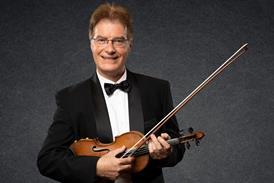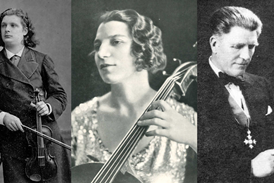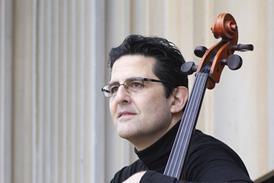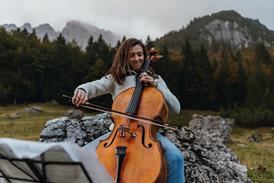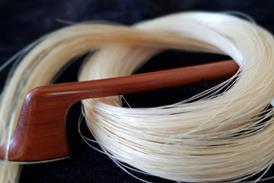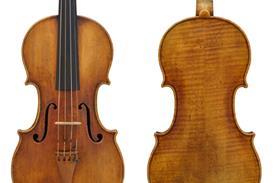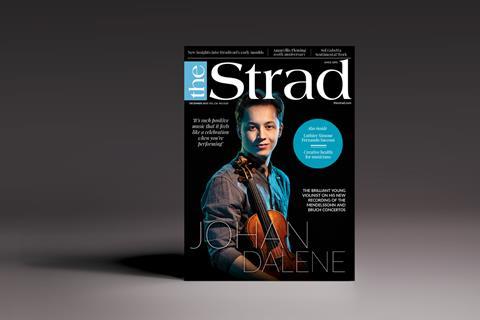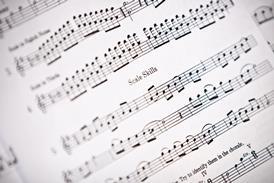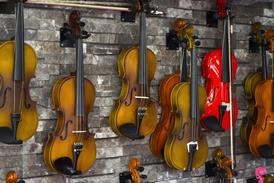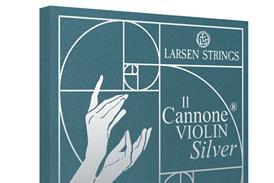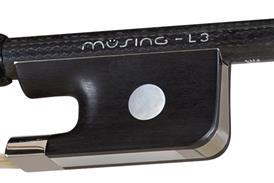All Technical articles – Page 6
-
 Focus
FocusSmall Wonders: The corner-block
John Dilworth celebrates the more humble yet essential parts of a violin in the first of a series of articles from 2013
-
 Premium ❘ Feature
Premium ❘ FeatureIn Focus: An 1824 violin by Nicolas Lupot
Richard Ward looks at an instrument made in the last year of the French luthier’s life
-
 Premium ❘ Feature
Premium ❘ FeatureTrade Secrets: Making purfling with fish glue
A flexible method for luthiers who prefer to make their own purfling rather than buy it ready-made
-
 Focus
FocusBack in stock at The Strad Shop: The Best of Trade Secrets 1-5
The five volumes comprise articles on all aspects of stringed instrument making and restoration
-
 Premium ❘ Feature
Premium ❘ FeatureUnder pressure: Dealing with humidity
Jacqueline Vanasse asks players and experts how to deal with the challenges of changing environments
-
 Premium ❘ Feature
Premium ❘ FeatureHow did Cremonese luthiers use consistent measurements?
Simone Zopf argues that there was in fact a single unit of measurement from which most of the rest can be derived
-
 Focus
FocusCremonese measurements: the use of the Roman oncia
Video showing how an instrument outline can be created using just one measurement and a set of concentric circles
-
 Article
ArticleMaking Matters: Off-Beat Violins
Luthier Andrew Carruthers demonstrates the sound quality of his ’X’ and ‘O’ violins, the ‘Tabolin’ and the ‘Ripple cello’
-
 Premium ❘ Feature
Premium ❘ FeatureMaking Matters: A new take on an old classic
To combat the tedium of the Covid-19 lockdowns, Andrea Schudtz embarked on a project to copy a decorated Andrea Amati violin – but with a modern twist
-
 Premium ❘ Feature
Premium ❘ FeatureTrade Secrets: Cleaning and repairing surfaces before closing an instrument top
An essential procedure for repair work on older instruments
-
 Premium ❘ Feature
Premium ❘ FeatureThe art of Computer Numerical Control arching
Yann Poulain reveals his method for roughing out the arching of the front and back plates using the technology
-
 Premium ❘ Feature
Premium ❘ FeatureMicro-CT scanning the 1727 ‘Benvenuti’ Stradivari violin
Rudolf Hopfner, director of the Collection of Historic Musical Instruments in Vienna, explains the process of scanning an instrument, and what the scans of the ‘Benvenuti’ tell us about its construction in this article from December 2016
-
 Premium ❘ Feature
Premium ❘ Feature‘An appearance of delicacy’ - Guarneri ‘del Gesù’ 1736 violin: Beauty from the Beast
Although Guarneri ‘del Gesù’ is best known for his wild, unruly later masterpieces, the 1736 ‘Cessole’, ‘Teja–Ferni’ violin reveals his softer side, as Carlo Chiesa explains
-
 Premium ❘ Feature
Premium ❘ Feature‘Makers have been working blind’ - Cremonese archings
Gareth Ballard presents a detailed method for analysing the various curves of archings
-
 Premium ❘ Focus
Premium ❘ FocusAnalysing the 'Titian' Stradivari violin, 1715
In our February 2009 issue, Sam Zygmuntowicz examines one of Stradivari's finest golden period instruments, using both traditional and high-tech methods
-
 Premium ❘ Feature
Premium ❘ FeatureCopying the ‘Titian’: A study in scarlet
Jesús Alejandro Torres reports on a study by the Violin Making School of Mexico, in which three copies of Stradivari’s ‘Titian’ violin were made using wood of varying densities
-
 Premium ❘ Feature
Premium ❘ FeatureMaking copies: Sounds like a match?
If someone makes an exact copy of a Stradivari, will it sound like a Stradivari? Sam Zygmuntowicz attempts to answer the question by making duplicates of the ‘Titian’ and ‘Willemotte’ Strads, as well as the ‘Plowden’ Guarneri ‘del Gesù’
-
 Premium ❘ Feature
Premium ❘ Feature‘Timbre and brilliance are not static, but dynamic’ - Making Matters: Sound ideas
Violinists and brothers Arne and Jens Rossbach share their experiments in sound and timbre
-
 Premium ❘ Feature
Premium ❘ FeatureTrade Secrets: Fitting a bridge to a violin belly
A detailed account of a process that revisits a fundamental skill for luthiers
-
 Premium ❘ Feature
Premium ❘ FeatureIn Focus: A 1756 baroque cello by Robert Duncan
David Rattray on the Scottish maker’s mid-18th-century baroque cello

